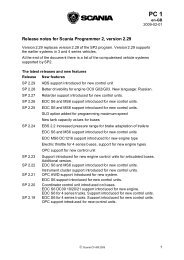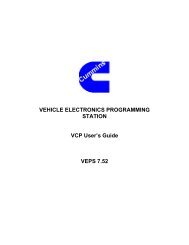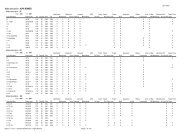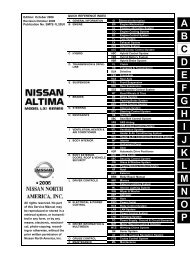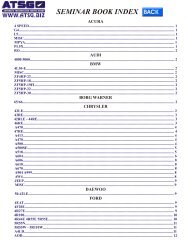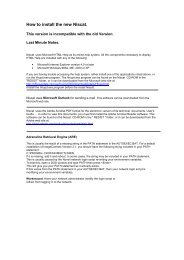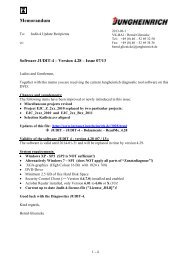Vogele Basic Training Hydraulics & Electrics
Vogele Basic Training Hydraulics & Electrics
Vogele Basic Training Hydraulics & Electrics
Create successful ePaper yourself
Turn your PDF publications into a flip-book with our unique Google optimized e-Paper software.
E.2.0 Units of measurement in electrics<br />
E.2.2 Types of electricity<br />
As a rule, a distinction is made between three different technical types of electricity:<br />
Direct current (e.g. VÖGELE on-board network):<br />
Direct Current (DC) is understood to mean an electric current that does not change its direction<br />
or strength over time, i.e. it remains constant over time.<br />
Direct current can be gained from alternating current by means of alignment.<br />
There are also direct sources of direct current, such as galvanic cells (batteries) or photovoltaic<br />
cells (solar cells).<br />
Alternating current (e.g. VÖGELE heating system):<br />
Alternating Current (AC) is characterized by a continuous, usually periodical change in the direction<br />
of current.<br />
The periodical change is expressed as a frequency (Hz) that specifies how often the current direction<br />
changes per second.<br />
Advantage: Alternating current can be easily transformed between different voltages.<br />
Mains frequency: Usually 50 Hz, but 60 Hz in the USA and Japan, for instance.<br />
A special form of alternating current is three-phase current (referred to colloquially as high-voltage<br />
current, rotary current or power current), which is widely used in public power grids for distributing<br />
electricity.<br />
Mixed current:<br />
A combination of alternating current and direct current is called mixed current.<br />
The strength of the direct current portion, which is constant over time, is continuously and usually<br />
periodically changed by the application of an additional alternating current.<br />
One example of the use of mixed current is in rectifiers.



